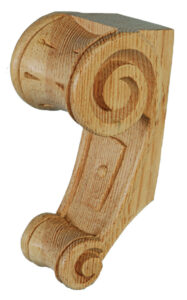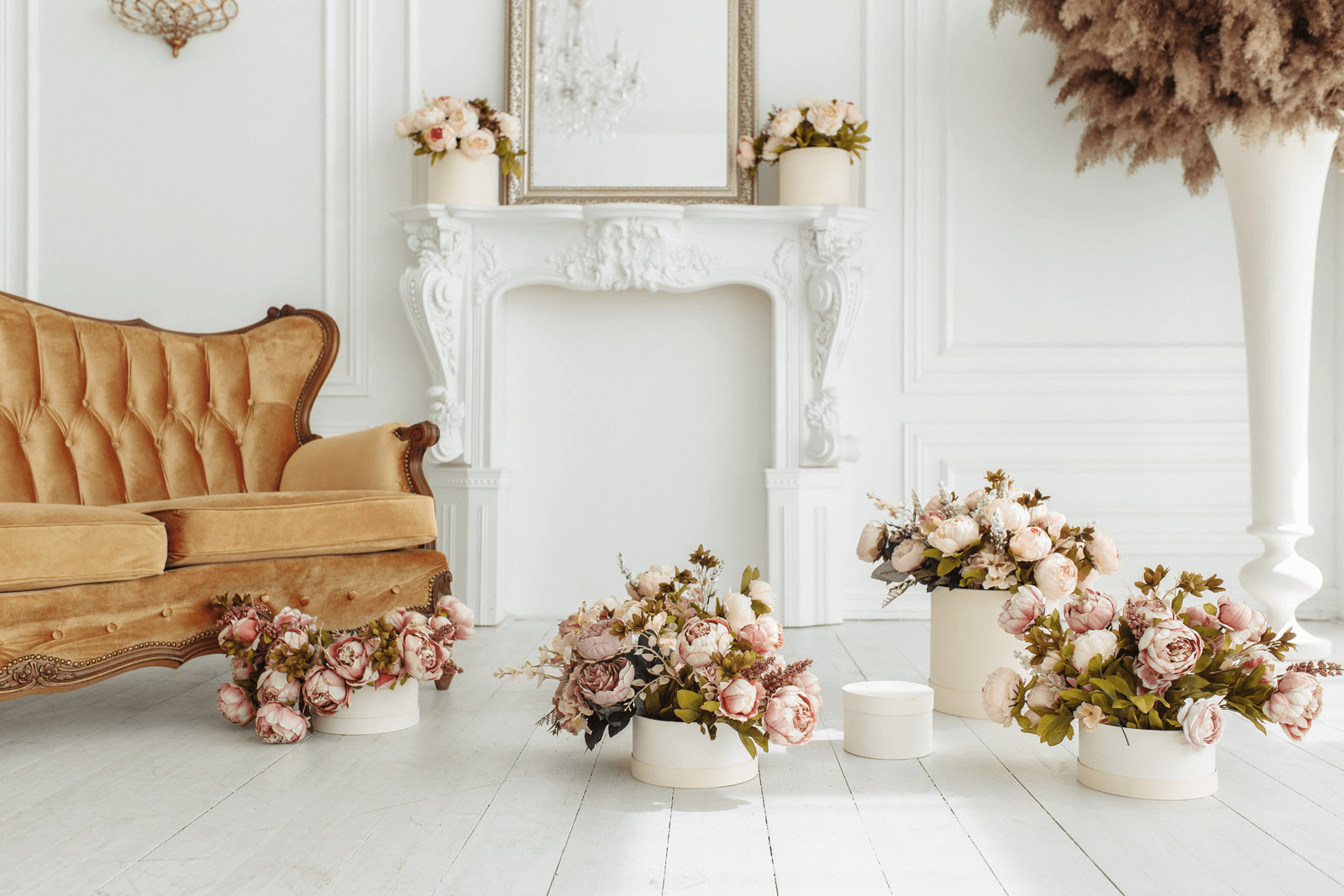
The Professionals Guide to Corbels and How to Use Them
All You Need to Know About Corbels and Brackets
Practical, stylish, and often essential, corbels are an architectural feature with a huge range of benefits. Follow our in depth guide to corbels and find out everything you need to know about this multipurpose aid to architects and millworkers.
What is a corbel?
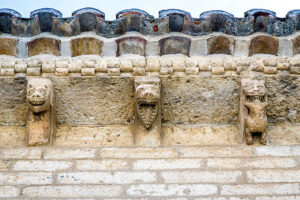
Corbels are brackets – often triangular in shape that project from a vertical surface and support a structure above them. Examples are the support of an overhang, a shelf, mantelpiece, work surface, arch or beam.
Decorative as well as practical these handsome features can be made from stone, brick, wood, metal, plaster or synthetics. They are widely used in modern construction design. Classical corbels add vintage charm to your home or refurbished interior.
Where did the name Corbels come from?
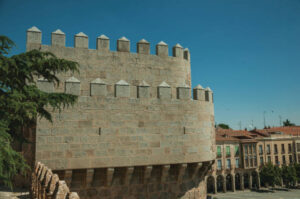
Historically a reference to the stone braces that supported the protruding battlements of a fortress. The word is derived from the French word ‘corbeau’, meaning a crow. A bird that would be perched up there with these supports.
Who first used corbels?
Corbels have been used to support ceilings, domes and arches since the great temples of the earliest known cultures.
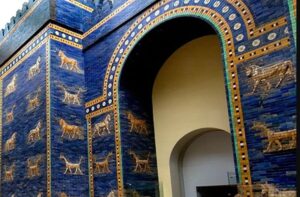 In their original form, bricks in a vertical wall were left to protrude, one above the other to provide a stepped depth of support, even creating a vault or corbelled ceiling. King Nebuchadnezzar used this method in the ancient city of Babylon to build the stupendous arches of the Ishtar Gateway. A magnificently prestigious entrance to his great city that dominated the ancient world.
In their original form, bricks in a vertical wall were left to protrude, one above the other to provide a stepped depth of support, even creating a vault or corbelled ceiling. King Nebuchadnezzar used this method in the ancient city of Babylon to build the stupendous arches of the Ishtar Gateway. A magnificently prestigious entrance to his great city that dominated the ancient world.
Reading like a list of superlatives in architectural development the Egyptians introduced them to support the edifices of the great temple of Ramses at Thebes. Support corbels made of stone were used to create the lofty pediments of the Greek Temple of Artemis and the vaulted archways of the Mayan buildings in Mesoamerica.
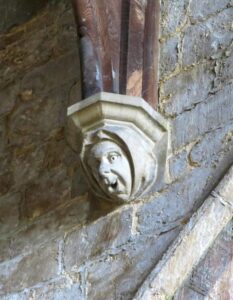
In the Middle Ages, corbels were a common feature in Gothic architecture, used to support the weight of vaults and arches. They were often decorated with intricate carvings, depicting religious figures, demons or mythical creatures. They were also widely used in the architecture of the Renaissance, and were developed in the Baroque and Rococo periods that followed.
During the Victorian era, corbels became popular in the form of brackets, used to support eaves, other architectural elements. They were also popular for fireplace mantels, shelves and cupboards. There to create a sense of nostalgia for the grandeur of the Greco Roman period, Moghul architecture in India and the other influences derived from the spread of colonialism.
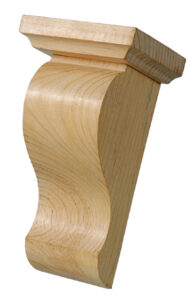 In the modern day corbels are used to create visual interest and aesthetic appeal within a design space or for purely functional support. Design styles can be simple modern linked to clean lines of Mission style or more decorative traditional designs.
In the modern day corbels are used to create visual interest and aesthetic appeal within a design space or for purely functional support. Design styles can be simple modern linked to clean lines of Mission style or more decorative traditional designs.
Using decorative and functional corbels
Functionally, corbels can serve as a support for various architectural, millwork and furniture features such as beams, arches, overhangs, bar tops, fireplace mantels and pediments. They work by transferring the weight of a feature down to the walls or foundations, distributing the load and preventing the collapse of the structure. They are also used to create cantilevers and overhangs, which can add visual interest to a building and create space for porches, balconies, and other features.
Corbelling
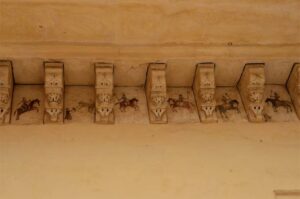
Corbelling is the application of multiple corbels for continuity of effect
Decoratively, corbels can be used to add architectural interest and ornamentation which in turn can add value to a property or a piece of furniture.
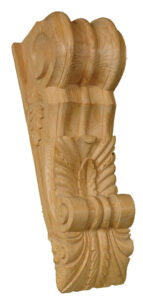 Some styles feature intricate, ornate designs whilst others are more modestly stylish with clean simple lines.
Some styles feature intricate, ornate designs whilst others are more modestly stylish with clean simple lines.
Whatever project you’re doing there will be a corbel design to suit your needs and we’ve listed some ideas and common uses for you here.
- Supporting countertops, bar tops, shelving and fireplace mantels
- Supporting structural beams
- Interior and exterior entryway ornamentation
- Support of archways, balconies, domes and ceilings, staircases
- Topping pilaster fluting
- Upstyling a stove hood
How many different types of corbels are there?
There are several different types of corbels, each with their own unique benefits:
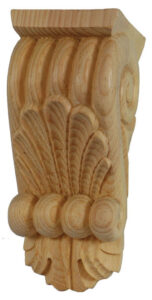
- Bracket corbels: These are the most common type of corbels and are typically used to support overhangs such as eaves, balconies, bar top support, shelving and porches. Can be used in combination with other decorative elements such as decorative onlays and appliques.
- Classical corbels: These are corbels that feature a retro traditional design, in classical or neoclassical architecture. A feature in fireplace mantelpiece support, interior millwork and architectural columns or entablatures.
- Console corbels: These are S-shaped corbels of proportionally greater height to width or depth, that are used to support an arch or a projecting element such as a mantelpiece in Gothic and Renaissance architecture and provide support for a console table, usually found in an entranceway.
- Scroll corbels: These are corbels that feature an S profile lending themselves to a decorative appearance that also creates a greater depth of support whilst reducing the weight of its mass.

- Cantilever corbels: These corbels are similar to bracket corbels, but they are used to support elements that extend out from the wall without any visible support underneath.
- Modern corbels: These corbels have a more contemporary design and are used in modern architecture and interior design. They are often used to adorn furniture and fireplace mantels or support shelves, countertops, and other architectural elements.
Choosing the right corbel
First consider the purpose of the corbel in your project as this will determine its size. Do you want your corbeling to provide effective support or a purely decorative element. Once you’ve determined the corbel’s purpose, it’s important to size it accordingly.
Corbel sizes
Unsurprisingly, corbels come in an almost infinite range of shapes and sizes so how can you choose the right size corbel for your next project? First of all, make sure to measure carefully the area where the corbels will be installed, make a sketch of the components and choose a size that will fit effectively.
If the corbels are supporting a countertop or overhang, the rule of thumb is that they must be at least half the depth of the overhang. If you’ll be using them to support shelving or for fireplace mantels it’s best to use the 2/3 rule. This is because they will be the main support system for the weight of the mantelpiece and anything placed on it.
For structural beams or fluted pilasters, match the corbel width to width of the beam or pilaster.
You may simply want to use corbels as a beautiful design feature, but keep in mind that their main purpose is utility. Even if your corbels aren’t supporting something, they should appear as if they are and keep them in proportion to whatever surface you’re working with.
Which corbel should I use?
When choosing a corbel, there are several factors to consider:
Material: Corbels can be made from wood, stone, metal, plaster or synthetics. The material you choose will depend on the function of the corbel, the overall aesthetic you are trying to achieve, the finish material being used in your project as well as cost.
Corbel style: Corbels come in a wide range of styles, from traditional and ornate to modern and simplified. Choose a style that complements the overall design of your project.
Corbel function and load bearing capacity: Make sure to choose a corbel that is strong enough to support the load it will be bearing. Consider the weight of the architectural or furniture element it will be supporting and the size of the corbel.
Bookend Corbels: A pair of corbels laid flat can provide an inspirational style assist for tidying books.
Corbel Installation: Consider how the corbels will be installed, whether they will be attached to a wall or a beam and make sure you have the appropriate hardware and tools for the installation.
Cost: Corbels can vary widely in cost, so consider your budget when making your selection.
By considering these factors, you can choose corbels that will enhance the design of your project and provide the necessary structural support. It’s also advisable to consult with an architect or a building professional for guidance on selecting well for your specific project needs.
What are the benefits of using corbels?
There are many benefits of using corbels including:
 Structural support for architectural elements
Structural support for architectural elements- Architectural and design enhancement
- Enhancement of energy efficiency of spaces
- Ability to create overhangs and cantilevers
- Added weight bearing capacity for a structure
- Creating a sense of grandeur and ornamentation
 Adding value to a property, furniture item or design feature
Adding value to a property, furniture item or design feature- They can be used in combination with other decorative elements
- Corbels can be found in a variety of materials, each with their own unique characteristics.
Energy efficiency with corbels
Corbels can be used to improve the energy efficiency of buildings through the use of both overhangs (for shading), and thermal breaks to create additional depth of insulation.
Overhangs are particularly effective in hotter climates and during summer, when the sun is high in the sky and the heat and rays are hitting buildings at a steep angle. Overhangs cast shade onto windows, reducing the amount of solar heat that enters a building. This in turn reduces the load on air conditioning systems, reducing energy consumption and costs.
A thermal break is an insulating layer or air pocket between horizontal floor or vertical wall surfaces and corbels can be used to facilitate this important purpose. Placed between the exterior and interior of a building they can help reduce or prevent heat transfer. The material from which they are made can act as insulation, helping to reduce heat loss in the winter, and heat gain in the summer.
It’s important to consult with an energy efficiency professional or an architect to determine the best means of energy efficiency in a specific building.
Adding value with corbels
There are a multitude of ways that corbels can add value to property and furniture…
Increased property value
The addition of corbels can increase the overall value of a property, making it more attractive to potential buyers and renters.
Structural support
Corbels provide structural support for architectural elements such as beams, arches, and overhangs, which helps to ensure the safety and stability of the building.
Energy efficiency
Corbels can have a positive impact on energy efficiency by providing shading and insulation, which can reduce cooling and heating loads, and decrease energy consumption and costs.
Aesthetic appeal
Corbels can be used to enhance the architectural design and aesthetic appeal of a building, adding interest and elegance. They are often used to create overhangs, balconies, and other features that add visual interest and curb appeal.
Historical significance
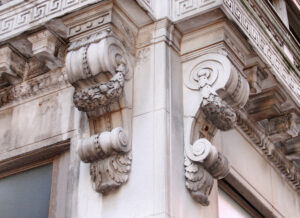
In older buildings, corbels can be an important element in preserving the historical character and integrity of the property. Corbel restoration or replacement can be a vital part of keeping the theme of period refurbishment or maintaining the pedigree of important heritage sites.
Decorative value
Corbels can be decorated with foliate arabesques, intricate carvings, sculptures, and other decorative elements. these can provide an elegant uplift and a visual interest that increases the value of a building, interior fit out and furniture.
How are corbels made?
Corbels can be made using wood, stone, metal, plaster and a variety of synthetic materials. The method of creating the corbel will depend on the material being used.
Wood Corbels
Wooden corbels are normally made from solid wood but are also available more cheaply from wood composite. They can be carved by hand using traditional carving techniques or shaping with a band saw. Alternatively, they can be mass produced, cost effectively by CNC router.
Stone Corbels
Stone corbels can be produced from granite, limestone or sandstone. Historically they would have been made by hand using a traditional hammer and coal chisel. Modern day stone corbels are more likely to be machine made using a parallel or fluting router bit.

Metal Corbel or Bracket
Metal bracket production will be from materials such as steel or aluminium using forging, welding, shaping and machine cutting.
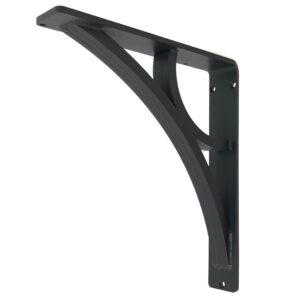
Cast Iron and Plaster
Cast iron and plaster corbels would be made in a mould, making mass production both fast and cost effective. Iron has the advantage of its enormous strength and outdoor durability. It also requires extreme safeguards in the preparation and pouring of molten metal, It can be part of an iron pillar or welded steel structure. Plaster is an inexpensive material that blends with interior plaster ceilings and walls.
Resin, fibreglass and Styrofoam
Synthetic corbel brackets lend themselves to being machine stamped, with or without surface decoration. This can be very cost effective for budget interior décor.
Composite Materials
Corbels made from composite materials can include both stone and wood content and be formed in a simple mould or pressed with a stamping machine.
Whatever the material, when corbels are produced in multiple quantities then a mould or templates of the required shape will be used.
Design styles of corbels
Corbels have developed and evolved through different decorative designs styles through the ages including
- Classical – Evoking the influences of classical Greco roman decoration and architecture
- French Provencal – Clean lines with a deep scroll

- Acanthus Leaf – A stylised leaf motif dating from early Greek temple ornamentation and symbolic of health and immortality
- English Countrystyle – A nostalgia corbel radiating the warmth and splendour of country cottage and rural farmhouse living
- Leaf and Scroll – Natural motif leaf motif with deep scrolls
- Victorian – The Victorian house corbel is evocative of interior décor from that era. Victorians drew many of their design concepts from their wide colonial presence.
- Georgian – Georgian corbels are characterised by an understated elegance of symmetry and gracious proportions.

- Roll & Scroll – An upward scroll in the centre is used as a design feature to enable greater depth of the supporting scroll at the top
- Shaker – The name is taken from a religious sect of Quakers. Their home furniture was based upon the guiding principles of simplicity, utility and honesty creating furniture of minimalist design. Similar in this vein of simplicity of design arose the Mission corbels.
- Reeded
 Reeding is a series of convex, raised mouldings in parallel. Originating from the earliest techniques of riven oak where the timber was split along the grain rather than sawn, leaving parallel lines on the surface of the wood which were enhanced for decoration.
Reeding is a series of convex, raised mouldings in parallel. Originating from the earliest techniques of riven oak where the timber was split along the grain rather than sawn, leaving parallel lines on the surface of the wood which were enhanced for decoration. - Fluted Corbels – Fluting is where parallel moulded lines are scooped out to be concave.
- Vineleaf – Ideal for kitchen corbel decor and wine racks, vine leaf corbels are decorated with grape and vine designs
- Rustic – Rustic corbels are significant of a simple rural lifestyle and have a variety of applications, often referred to as farmhouse corbels
- Celtic – The design of Celtic corbels is closely related to the Celtic knot, an intricate weave of one line signifying eternity or oneness
- Art Deco

- Art Deco corbels are essentially based on the concept of balance within a geometric and anti-traditional design. A highly stylised movement of art and design which came to the fore in the early 20th Century
- Console Corbels – A high, serpentine shaped corbel suitable for support of a console table or console shelf, often situated in an entrance hall
Installing corbels
Corbels by definition will be fixed to a vertical surface:
- Masonry corbels need to be physically integrated or anchored into the structure of the wall with mortar. Additional metal fixings can be let into the wall to provide further support
- Cast iron corbels and wrought iron brackets will require to be welded in position onto a metal structure
- Pressed Metal Brackets need to be screwed in place through the pre drilled holes provided. Make sure the screw has a suitable depth to provide the necessary support
- Plaster corbels can be fixed with plaster or glue then drilled and screwed into place
- Resin composite, Styrofoam or fibreglass corbels can be fixed with adhesive or epoxy resin. The item can be held in place with a nail or screws.
Fixing Wooden Corbels
Wooden corbels are versatile and can be fixed in a number of ways depending on the circumstances:
- If you have access to the back of the structure, screw directly from the support surface into the back of the corbel
- If you have access to the corbel from above, use a 90 degree metal right angle bracket rebated and screwed to the top of the corbel
- The corbel can be fixed with a screw from the front. The type of fitting you need will depend on the nature of the substrate you are fixing onto.
- Use high quality wood glue or adhesive. Read the product instructions and apply as instructed. Do one corbel at a time so that the glue does not go off
- Wood corbels can also be skew nailed from the side into a wood frame underneath. That means nail it at an angle from each side. For this method it is best to pre-drill pilot holes for the fixing first. This technique can be used in conjunction with adhesive
- If fixing onto plaster or render finish, you can use mirror plates at the sides. After fixing, cover the plate over with some plaster and/ or thick paint, to hide the fixing in the wall.
- The corbel can be pre-mounted on a wooden base plate that is slightly larger than the corbel itself. Then fix the base plate to your intended vertical surface.
Advantages of working with corbels
Corbel brackets are a building or millwork component that provides visual charm and practical support and are available from a variety of sources. See our next contribution.


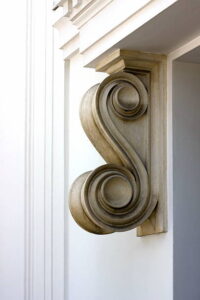
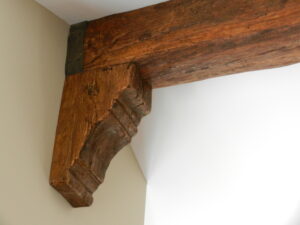
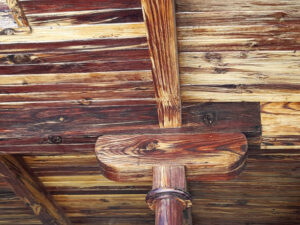 Structural support for architectural elements
Structural support for architectural elements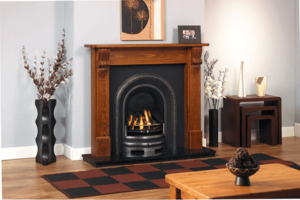 Adding value to a property, furniture item or design feature
Adding value to a property, furniture item or design feature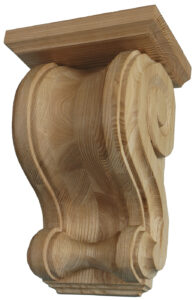
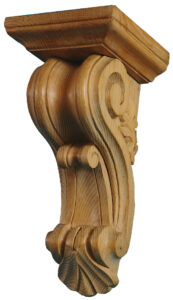
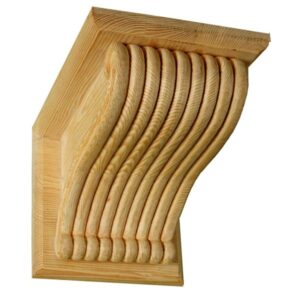 Reeding is a series of convex, raised mouldings in parallel. Originating from the earliest techniques of riven oak where the timber was split along the grain rather than sawn, leaving parallel lines on the surface of the wood which were enhanced for decoration.
Reeding is a series of convex, raised mouldings in parallel. Originating from the earliest techniques of riven oak where the timber was split along the grain rather than sawn, leaving parallel lines on the surface of the wood which were enhanced for decoration.